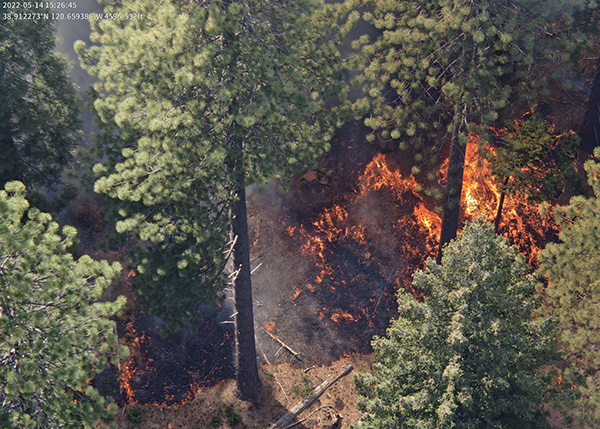Understanding the Turbulence of Wildfires

Aug. 11, 2023 - As news of deadly wildfires spread this season, Tirtha Banerjee’s lab is striving to help predict how natural forces like air, fire and water move. His team is cracking the code on turbulent bursts – a power that propels wildfires, ocean waves and even peaks in the stock market.
Banerjee, an associate professor of civil and environmental engineering at UCI, along with UCI graduate student Subharthi Chowdhuri published their findings on the universal features of turbulent bursts in the journal Physical Review Fluids.
By examining bursts of different sizes and durations at various scales, the UCI researchers could include their impact on turbulence statistics. They used data from two different sources – a laboratory-based wind tunnel in Melbourne, Australia, and a field site in the salt flats of Utah - to create a "burstiness curve" that describes the multiscale nature of turbulent bursting.
The study revealed that bursts were influenced by coherent structures within the flow. Despite the diverse settings where the data was collected, a similar behavior in terms of burstiness demonstrated that universal orderly features can be defined in turbulent flows, even when they exhibit chaotic behavior.
The identification of a common component in turbulent bursts will aid in the creation of advanced models for turbulent flows. This may eventually result in more accurate evaluations of how to address the threat of wildfires by improving models of fire behavior to account for the turbulence of the blazes.

Turbulence differs in forests and grasslands
Banerjee and UCI graduate student Ajinkya Desai also monitored the varying turbulent behavior of wildfires in forests and grasslands and published their findings in the journal Agricultural and Forest Meteorology. They studied how fire interacts with its surrounding atmosphere near the ground by synthesizing turbulence data collected by the U.S. Forest Service and San Jose State University.
Sensors were put at multiple heights on the path of controlled fires to measure their properties. They collected data at a high sampling rate (10 or 20 times per second) to examine how the fires behaved on grasslands in Texas and below forests in New Jersey. The turbulent wind was also measured in three directions at the same rapid rate to see how heat and wind affected the flow of the fire.
Those experimental conditions represent different types of wildland fires that blaze in open grasslands and forests. The two environments differ significantly in the way mass, heat and momentum flow and how the environs impacts the intensity and speed of the flames.
The information they gathered on the turbulent kinetic energy of the blazes in various environments will help simplify the complicated equations that govern the physics of fires. This will ultimately improve models of fire behavior.
The research at Banerjee's lab is supported by the National Science Foundation and the U.S. Forest Service, Northern Research Station. The UCI lab is one of a handful around the world studying the turbulent interplay between fire, vegetation, and the atmosphere.
- Natalie Tso
